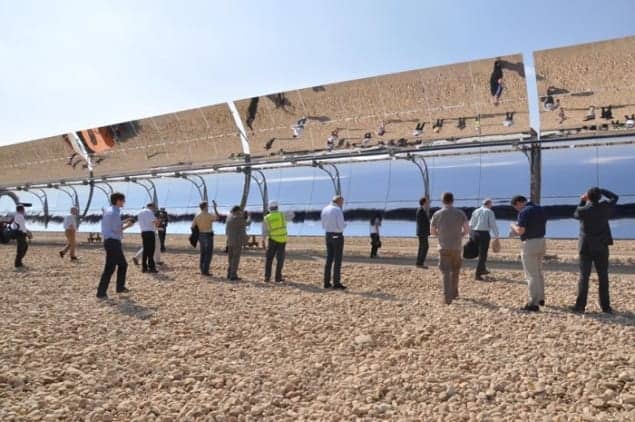
The German firms Siemens and Bosch have announced they are both leaving the Desertec Industrial Initiative (Dii) – a private industry consortium that plans to install a total of 125 GW of solar-power capacity throughout the Middle East and North Africa by 2050. The withdrawal of Siemens and Bosch from Dii, effective at the end of the year, has reignited doubts about the viability of the ambitious hundred-billion-euro project, which would involve piping the energy back to Europe via cables at the bottom of the Mediterranean Sea.
Siemens has also announced it is to completely pull the plug on its solar-energy business. Blaming “changed framework conditions, lower growth and strong price pressure in the solar markets”, the firm will instead focus on developing its wind and hydroelectric power units. Siemens says it is withdrawing from solar because its expectations for solar-energy activities “have not been met”. The firm adds that it sees renewable energy accounting for 28% of global energy use by 2030, but that solar power will make up only 9% of total renewable output, compared with 54% for hydro power and 27% for wind power.
Disappointing, but not fatal
Klaus Schmidtke, a spokesman for Dii, which is based in Munich, acknowledges that the firms’ withdrawal from the project is a disappointment. “Of course, we are not happy about this,” he says. “[But] we do not expect [this decision to have] any negative impact for our initiative.” Schmidtke notes that Siemens was just one of 21 Dii shareholders, and that other companies are still involved in the project (Bosch is only an associate member). These include Swiss industrial firm ABB, electric utility firm E.ON and Deutsche Bank. Schmidke adds that the US solar-panel maker First Solar, currently an associated member of Dii, is in talks to become a full shareholder.
Siemens says that it is already speaking with potential buyers for its photovoltaic activities in its Solar and Hydro Division, adding that the company will continue to produce steam turbines, generators, grid technology, control systems and other items for solar thermal and photovoltaic power plants.



